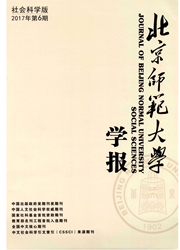

 中文摘要:
中文摘要:
基于“中国家庭动态跟踪调查”(CFPS)微观数据,利用DID模型对城镇居民基本医疗保险之于城镇家庭消费的政策效应的实证研究表明,参加城镇居民基本医疗保险对家庭的自付医疗消费支出没有明显的影响,而非医疗消费支出大约增长6.9%,可见2007年开始实施的城镇居民基本医疗保险有效地防止了居民因就医所导致的医疗保健支出迅速增加,也在一定程度上对家庭非医疗消费起到了保险作用.同时,医疗保险的政策效应存在着明显的群体差异和区域差异:一方面,不同收入组家庭消费对医疗保险的反应存在着异质性,中低收入家庭的参保后消费支出有显著增加,而高收入组家庭的消费行为则没有明显变化;另一方面,不同地区家庭消费对医疗保险的反应也存在明显不同.有鉴于此,各级政府应不断优化公共支出结构,提高政府对医疗保障资金支出比例,形成医疗保障投入的长效机制,不断完善医疗保障体系的建设,使医疗保障体系能持续引致居民消费的增长.此外,政府还应逐步使医疗保险在各地区不同收入群体之间的待遇水平相互衔接,平衡区域间的保障水平,实现公共服务供给的均等化,这对和谐社会的建设和经济的可持续发展具有深远影响.
 英文摘要:
英文摘要:
By using the survey data of the Chinese Family Panel Studies (CFPS), this paper analyzes the effects of URBMI on household consumption in urban China. The Difference-in-Differences estimates show that participating families would increase their annual non-medical consumption by 6.9 % 1,but their annual medical consumption remains unchanged. In addition, the URBMI increases non-medical consumption of the low income families and has no effect on middle and high income families. That is,the URBMI increases medical consumption of the low and middle income families,but has no effect on that of high families. It also increases non-medical consumption most obviously in Beijing participating families, followed by Shanghai and Guangdong.
 同期刊论文项目
同期刊论文项目
 同项目期刊论文
同项目期刊论文
 期刊信息
期刊信息
